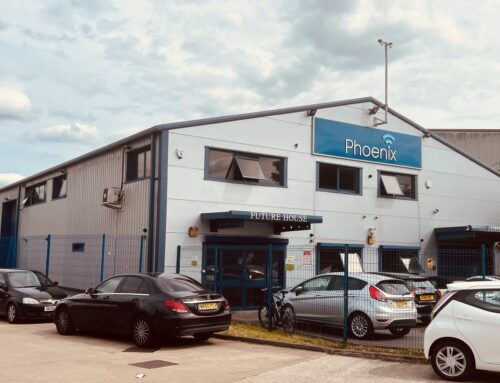 Buying and selling used mobile phones used to be something that happened on a handful of online marketplace sites. Mainly peer-to-peer, low key and informal, the perceived lack of value in or demand for pre-owned mobiles meant there was little in this cottage industry to interest the mainstream, big business world of new consumer gadgets.
Buying and selling used mobile phones used to be something that happened on a handful of online marketplace sites. Mainly peer-to-peer, low key and informal, the perceived lack of value in or demand for pre-owned mobiles meant there was little in this cottage industry to interest the mainstream, big business world of new consumer gadgets.
Not any more.
Somewhat under the radar, trade in second-hand mobiles has become a multi-billion dollar global industry. While the technological achievements of the latest, fastest, most powerful smartphone releases have continued to dominate the headlines, behind the scenes a quiet revolution has been taking place.
New smartphone sales have actually gone into decline. Faced with ever-increasing prices for the latest models from the biggest brands, many consumers have started to look for lower cost alternatives that offer reliability and value over sound bite-friendly features. Many have realised they can get this from pre-owned handsets, which continue to function perfectly well long after their original owner has traded them in for the latest model.
It is a trend that is now grabbing mainstream attention. Apple and Samsung themselves, the heavyweights in the mobile technology space race, have seen its potential. Both now sell refurbished smartphones. Major high street and online retailers are joining in, looking to take a slice of what is the fastest growing sector of the mobile industry.
In this paper, we will aim to tell you everything you need to know from a retailer’s perspective about selling used mobile phones. We will examine just how quickly the market for pre-owned handsets is growing, and explain why so many retailers are rushing to get involved. We will unpick the main benefits of selling second hand mobiles, and then focus on our own area of expertise – used mobile phone wholesale, and why it is so important for retailers to pick the right supplier.
Used Mobile Phones: A Growth Story
Back in 2016, in a predictions paper on forthcoming trends in technology, media and telecommunications, Deloitte called the used smartphone sector “the $17bn market you may never have heard of.”
Things have moved on since then, and at quite a pace. Whatever figures you choose to look at, a familiar story emerges – the market for pre-owned mobile phones is witnessing explosive growth, to the extent that we can already talk about it as a $20bn industry.
To start with, Deloitte itself stated that sales of used mobiles was growing at a phenomenal rate. It estimated that the global trade value of second-hand mobiles had grown from $11bn in 2015 to $17bn in 2016 – a year-on-year increase of 55%.
Another market analyst heavyweight, IDC, forecast that the used phone market would be worth $52.7bn by 2022. If we use the figure offered by Persistence Market Research predicting that used phone sales will grow at a CAGR of 9.8% between 2018 and 2026, we must already be at the $20bn mark.
Persistence itself calculated that combined sales of refurbished and used mobiles reached $19.7bn by the end of 2017.
Whichever way you look at it, the pre-owned mobile phone sector is on the up and up and that is a trend all the analysts agree is likely to continue. Just as importantly, it is growing much faster than sales of new smartphones, and may even be a contributing factor in the slowdown of that market.
IDC reported that in 2017, global shipments of new smartphones went into decline for the first time, falling by 0.5%. According to Counterpoint Research, overall growth in smartphone sales was just 3% that year. Counterpoint’s research director Peter Richardson made the point that, with a year-on-year growth of 13%, the refurbished market was the fastest growing of all smartphone sub-sectors, including domestic markets in giant emerging economies like India and China.
So what is behind this story of growth? There is a combination of changing consumer demands, growing maturity in the second-hand mobile ecosystem and smartphone technology itself at play here. Counterpoint’s Tom Kang argues that a decline in innovation with each new smartphone release cycle has helped to raise the appeal of second-hand phones
“The slowdown in innovation has made two-year-old flagship smartphones comparable in design and features with the most recent mid-range phones,” he said. “Therefore, the mid to low-end market for new smartphones is being cannibalized by refurbished high-end phones, mostly Apple iPhones and, to a lesser extent, Samsung Galaxy smartphones.”
When you combine this with the fact that used and refurbished phones offer considerable cost savings for increasingly value-conscious consumers, plus the fact that supply chain development has made it easier than ever to find second-hand versions of the top-name models from a variety of outlets, the used mobile success story starts to make a lot of sense.
Why Retailers are Moving into the Pre-Owned Mobile Market
Another factor behind the high-octane growth of used mobile phone sales is that the market has, to coin a phrase, ‘gone mainstream’. Ten years ago, there was very little in the way of a formal second-hand resale market at all. What did take place was largely peer-to-peer trading on sites like eBay and Gumtree, with the odd entrepreneurial business stepping in to source unwanted devices cheaply to sell at a profit on the same platforms.
As smartphones emerged, the margins on second-hand mobiles increased, helping those early online entrepreneurs to evolve into the first pre-owned phone stores. These usually sold used handsets alongside other value added services like repairs and device unlocking. But in terms of the wider supply chain, things remained fairly informal and below the radar.
Now things have turned a full 180 degrees. Used smartphones are being sold right alongside brand new devices in the same mainstream markets. The top manufacturers, including Apple and Samsung, now sell refurbished devices they take back in trade for new handsets.
And high street retailers are getting in on the act, too. Phoenix Cellular counts the likes of Argos and leading airtime dealer GiffGaff amongst its customers.
In the first place, we can say that these retailers are doing what successful retailers always do – they are moving with the demands of consumers. It is interesting to note that, as sales of used devices have grown, the average price paid for a smartphone has steadily declined. Consumers are more and more cost-conscious and retailers are moving to meet that demand by offering used and refurbished smartphones at a fraction of the cost of new handsets.
But value alone is not enough. For retailers and consumers alike, there has to be trust in the product. Regardless of cost, both want to know that the device they are trading or buying is of a certain quality, in good working order and with a reasonable lifespan ahead of it. This is where the growing maturity of the supply chain comes in.
Nowadays, any retailer wanting to sell used mobiles is not having to pick around auction sites and dubious resellers sourcing stock with very little idea of what they are buying in terms of quality. Thanks to professional, large-scale wholesale operations like Phoenix, all the sourcing work is done for the retailer, who can now buy ready-to-ship used stock the same way they would brand new devices, in whatever quantities they need.
What is more, we test and grade every phone we come into possession of to the highest standards, guaranteeing a minimum standard of quality for each and recommending an appropriate retail price point. We also refurbish phones back to as-new condition. And because of our size, we enjoy considerable economies of scale through bulk purchasing pre-owned phones, meaning we can sell handsets to retailers at prices where there is plenty of room for high margins.
The Benefits of Selling Second-Hand Mobiles
To online and high street retailers, airtime dealers, device manufacturers and vendors, there are plenty of benefits to selling used mobile phones. Here are some of the big ones:
High margins
High end smartphones are notoriously expensive to buy new. What is more, manufacturers like Apple and Samsung fully understand their value and maintain a tight grip on the markets. Because they also run their own direct-to-consumer retail operations, the big brand producers have little incentive to do other retailers any favours. They keep wholesale prices high, meaning retailer margins are always squeezed.
With pre-owned smartphones, there are no such issues. Rather than the manufacturer, the original source for a used device is the owner, who is often happy to get anything back for an old device, including a part-exchange deal on a new handset. This relatively low starting point generates value through the supply chain, and right at the end of it, retailers can still buy used handsets for prices considerably lower than their typical RRP.
Maximise value
Any market relies on supply as much as it does demand. For used phones, supply depends on encouraging consumers to sell or trade in their old phones instead of keeping them in a box somewhere or throwing them in the bin. According to Deloitte, a steady growth in the value of pre-owned devices has helped to encourage more and more people to sell old phones. The attraction of getting a good price when you are done with a handset is that it maximises the value of the original purchase.
A similar principle applies to retailers. If you only sell new mobile phones, each transaction is a single hit – you earn the revenue once and then it is gone forever. If you sell used phones as well, on the other hand, you become involved in a cycle. Modern smartphones are robust enough to last through three or four owners. Each time you sell a pre-owned phone, you are creating another opportunity for it to come back round the cycle so you can profit from it again – even if it is unlikely to be the exact same handsets.
Deloitte also makes the point that this could all lead to increased consumer activity. If phone owners know they can get a good price for their device, they will be more inclined to change phones more often, stimulating the replacement cycle.
Eco-friendly
As well as maximising value, maximising the longevity of mobile phones through second hand trade reduces their environmental impact. It is wasteful in the extreme for handsets that are in perfectly good working order to end up thrown away when replaced by a new model. And the more we can slow demand for brand new devices by recycling old ones, the less energy and materials we will consume making new ones.
Recycling and reducing waste is a major agenda that is having more and more of an impact on how consumers make their purchasing decisions. Stocking used mobiles meets this demand.
Marginal VAT
Under UK tax rules, retailers save money on their VAT bills selling second-hand goods. Under what is known as the VAT Margin Scheme, value-added tax on pre-owned items is not only calculated differently to standard VAT, it is worked out at a lower rate – 16.67% as opposed to the normal 20%.
The principle of marginal VAT is that it is calculated on the margin you make on selling used goods, not on the total sale price. It is specifically designed for VAT-inclusive transactions, i.e. retail sales to consumers. Although it is a voluntary scheme, for retailers selling pre-owned mobiles there is no reason not to make use of it, and it can easily give you savings of more than 50% on your VAT liabilities.
Choosing the Right Supplier for Used Mobile Phones
There are plenty of incentives for retailers to take advantage of the burgeoning used mobile market. But as they say, there is no such thing as a free lunch. Selling pre-owned mobiles makes sound business sense if it is done properly and professionally. Jumping in without due care and attention can expose you to a number of pitfalls.
It is crucial, for example, to get the supply side right. There is no single, simple route from phone owner to wholesaler to retailer. People sell and trade in their used phones in all sorts of different ways, in all sorts of different places. This highly dispersed intermediary level can be difficult to navigate, and throws up a variety of challenges for retailers. The key ones are:
- Guaranteeing the quality and provenance of the devices you buy.
- Being able to source handsets in the volumes and frequencies you need, especially the most popular models.
- Finding a reputable and reliable supplier in the first place who can meet your merchandising needs as they evolve.
This is where the growing maturity of the used mobile wholesale market really benefits retailers. At Phoenix Cellular, we have built our business model around making the supply of second-hand phones as convenient as possible for vendors, shaping our operations around meeting our client’s needs. We are run by a team of experienced professionals who between them have decades of experience in the mobile phone industry. Our mission has always been to create a peerless used mobile wholesale service based on integrity and expertise.
Here are some of the ways we guarantee satisfaction in both our products and services:
- We are Europe’s number one distributor of used mobile phones with the continent’s biggest selection of pre-owned devices in stock, including best-selling models from all of the biggest brands – Apple, Samsung, HTC, LG, Huawei and more.
- We work with an extensive network of our own suppliers to ensure our stock levels are consistent and high so we can always supply the models our clients want, in the quantities they need.
- We offer a rapid next-day delivery service anywhere in Europe, with a range of convenient purchasing options ranging from interest-free credit accounts to credit and debit card payments.
- We give every device we stock a grading – from ‘as good as new’ Grade A to ‘average wear and tear’ Grade C – to provide our customers with assurance and transparency about quality and consistency, and to provide a guide for pricing.
- Our gradings are based on an in-depth 20-point technical test using the latest diagnostic software, plus an evaluation of each handset’s physical and aesthetic condition. Phones are assessed by multiple technicians before a grade is agreed.
- We refurbish the very best used mobiles we come across and make them available as ‘premium handsets’ to our customers. Restored to impeccable working order, premium handsets are intended to compete directly with new smartphones, offering identical functionality at a much more attractive price. We even supply these handsets in branded ‘GR8 Mobile’ boxes, complete with accessories and our own 12-month warranty.
- We have the fastest and fairest RMA processes in the business, with a two-day turnaround target on all repairs and returns. To back up our confidence in our products and services, we offer a 100% satisfaction guarantee on all first orders, with a no-quibble return and cancellation policy if you are not completely satisfied.
Summary
A $20bn industry today, a $50bn industry by 2022. There aren’t many retail sectors that can offer those sorts of growth prospects.
Smartphones remain by some distance the biggest and most lucrative consumer electronics market. Yet it is an industry facing change. As smartphone ownership in developed markets approaches saturation – around 70% of adults in countries like UK, Spain, Germany and the Netherlands now own one – opportunities for vertical growth are finally slowing down.
The tactic that has seen the industry through the first decade of its existence – wait for the annual slew of new releases from the big brands and cash in – is starting to look jaded. Consumer priorities, once dominated by shiny new features, are changing. There is only so much innovation each new smartphone can offer and cost-conscious users are starting to look to reliability and value instead.
The growth of the used mobile market makes sense in all sorts of ways. From a supply perspective, people have to date tended to change their smartphones much earlier than their effective lifespan. That means there are more functional devices out there than required. Not only is this wasteful and not sustainable, it represents a missed opportunity to diversify the market, to provide greater choice at different price points to suit a more diverse range of needs.
For retailers, the opportunity is particularly attractive. With no big manufacturers controlling the wholesale market, the margins on used phones are often greater than those on new handsets. Selling second-hand phones effectively gives you two (or more) bites at the same cherry, a chance to make a profit through several transaction cycles as devices move back and forth from ownership to the market. Retailers can even benefit from reduced tax liabilities, such as those offered by the UK Marginal VAT scheme.
The key to cashing in on these opportunities is to have a good supplier. The growing maturity of the used phone market means sourcing stock is no longer a case of watching out for bulk auctions online or negotiating with private sellers. Through the new breed of modern used mobile wholesalers – and in Europe, Phoenix Cellular is the biggest – retailers can find the stock they need in consistent quantities at consistent levels of quality, with guaranteed choice, professional service and rapid fulfillment.


